In Hamelin in Lower Saxony. there’s an inscription on a wooden beam on the side of the Rattenfangerhaus (rat catcher’s house). An English translation on the plaque reads:
In the year 1284 on the Day of John and Paul, the 26th of June, 130 children born in Hamelin were led away by a piper dressed in many-coloured clothes to Calvary close to the Koppen and were there lost.
I’ve always thought it odd that a popular and charismatic teacher is often called a pied piper as if that were some kind of compliment. The term goes back to folklore of course, and to the story of the strangely dressed piper who was hired by the mayor of Hamelin to rid the town of its plague of rats. Most of us probably know the story via Robert Browning’s 1842 poem:
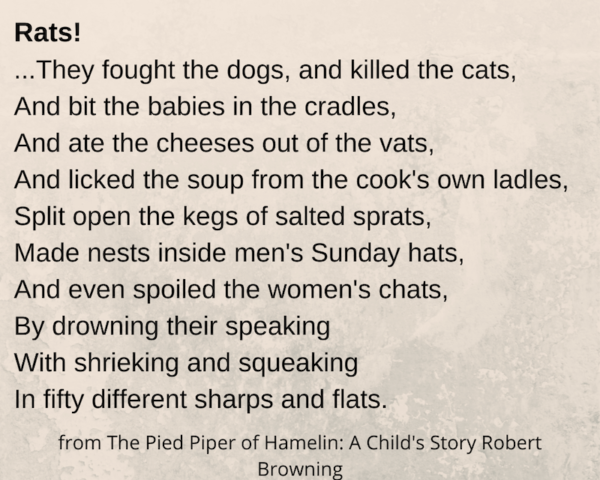
 Things in Hamelin were definitely bad.
Things in Hamelin were definitely bad.
As contracted, the piper plays his hypnotic tune and the rats follow him out of the city to their doom.
Now free of the rats, the town reneged on its promised payment and the piper plays his tune again and lures all the children out of the town never to be seen again.
“S/he’s a real pied piper”, we say admiringly of a popular teacher who inspires and engages children in learning.
Perhaps it’s an unconscious way of acknowledging the appeal of such people but also signaling that charisma may be potentially undesirable and can be dangerous.
What then to make of the code name Operation Pied Piper for the British government’s wartime evacuation scheme, the plan to remove millions of children from their homes and for their physical safety, separate them from their parents, and familiar surroundings?
But before all that, let’s take a look at this from cover to the Saturday Evening Post for the last week of 1939.
War for the United States was still almost two years away as the calendar ticked over into the new year. How to read the semiotics of this cover with J.C.Leyendecker’s New Year’s Baby for 1940?
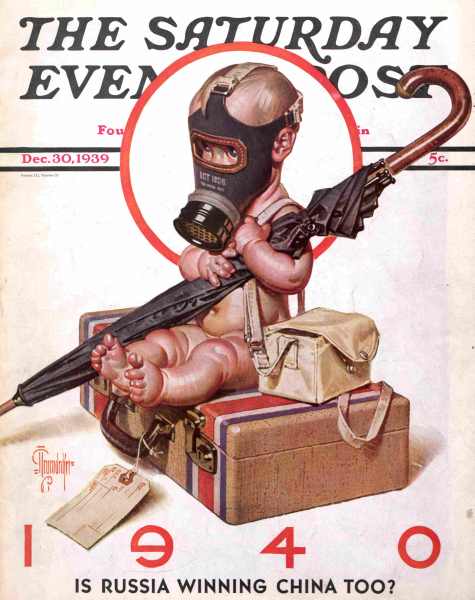
Clearly, war was looming in the minds of the editors and Leydendecker’s illustration suggests anxiety and ambivalence about the impact it was already having on the lives of children in Europe.
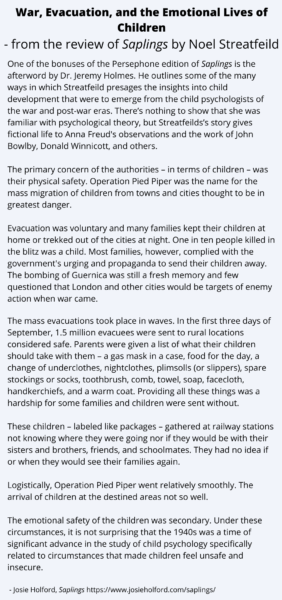
This unprotected baby with the wide round eyes of alarm behind the gas mask sits on a small suitcase with a label. The gas mask case strap is over the baby’s shoulder like a soldier’s knapsack. And the furled umbrella? Instead of the protection that an umbrella might symbolize, this baby is alone and exposed. Neville Chamberlain was usually portrayed with just such an item.
The failure of “peace for our time” has separated this baby from its parents and sent it alone into the world for its own safety.
The historical backdrop was the war in Europe – still in its quiet sitzkrieg “phoney” stage – and the mass evacuation of children from the big cities. (See sidebar.)
At the start of the war, London was well stocked with American journalists and they kept up a steady stream of stories to send to readers and listeners back home.
I’ve been digging into the documents of the time and the contemporary and modern accounts of the evacuation. One of my sources has been Life Magazine which in late 1939 had a lengthy photo essay on London’s evacuees. Lucky infants and children enjoying the fresh air and the sunshine of the countryside on their big adventure.
The early positive publicity about the evacuation – rather like the myth of the London Blitz a year later – can be considered a co-production of the news media and the UK Ministry of Information.
Those who believed the United States should enter the war wanted to keep Americans informed about what was at stake. They wrote and photographed and published a flow of stories about what was happening in London as it readied for war. It made for good copy and the Ministry of Information was happy to oblige with full co-operation.
But I’ve also been reading official documents and contemporary accounts as well as memoirs and fiction in an effort to understand the planning, the thinking, and the execution, The why, the what, and the how. and where it succeeded, where it went wrong and the lessons learned.
Along the way, I came across some amazing stories.
The evacuation of children on such a large scale was unprecedented. It was managed with the help of schools and with the co-operation of teachers and school authorities. We’ are all familiar with the images of children – pinned with labels – at railway stations, boarding trains, waving goodbye to parents carrying a bag and gas mask. And many of us have seen the old newsreels and read the accounts in novels and memoirs of the impact on children and their reactions and experiences. They ran the gamut from delight to horror. I wanted to go beyond those familiar clichés.
What were they all thinking? And how, as the long war dragged on, did that thinking change?
Taking the virus seriously has meant some extra time for reading and research. I’ve taken advantage of that. What follows will be some of the stuff I have come across.
And so in a series of rather loosely connected posts not necessarily in chronological order (or any order for that matter), I’m going to take a few cracks at sharing some of the stuff I have discovered. Perhaps in retrospect, the material will hold together and make sense. Or not. Perhaps it will be pied, like a coat of many colored patches.
And to begin: Here is a group of evacuees who have just arrived by train at Stevenage. It’s Friday, September 1, 1939 – two days before the declaration of war.
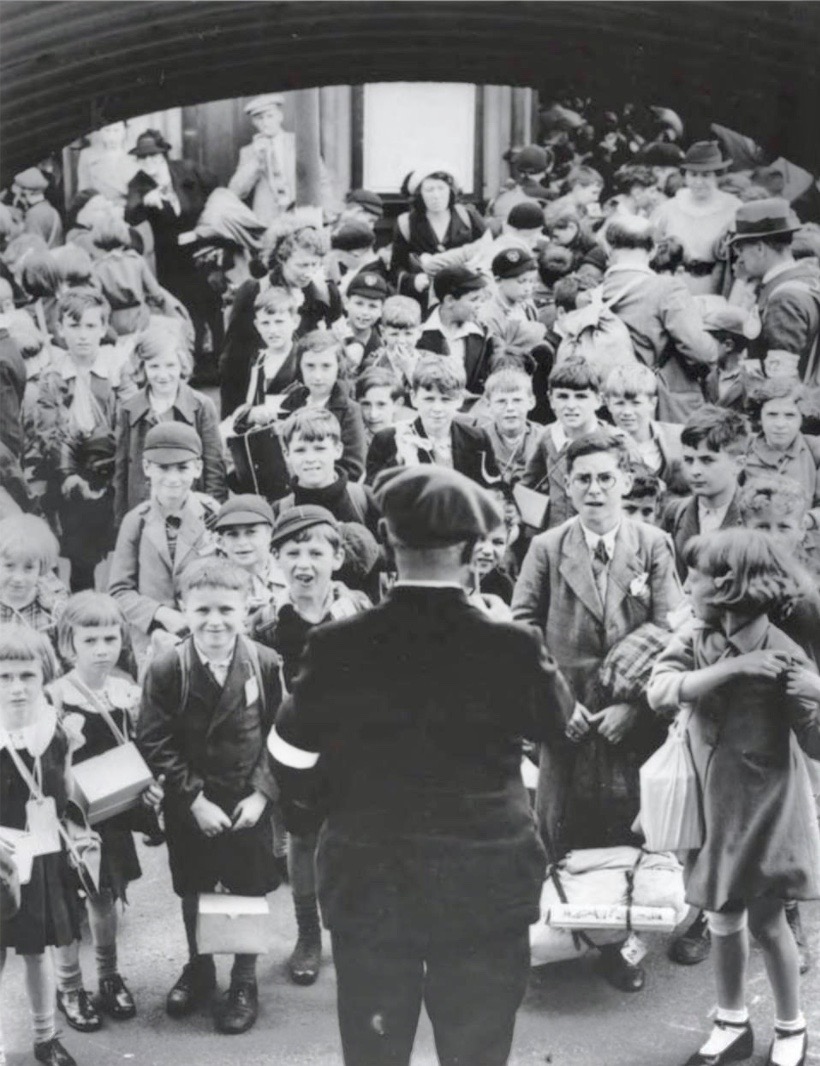
Why are they there? Now what?
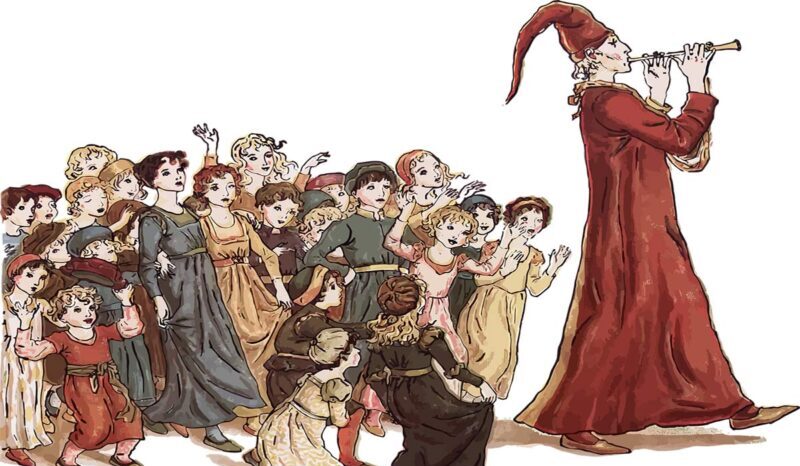


Thank you for this post, Josie. I didn’t know that the evacuation project was called Operation Pied Piper. Certainly a troubling reference and sad to think that that tremendous upheaval in so many children’s lives was a massive experiment of some kind. My mother’s evacuation from London to St. Albans was a terrible experience for her, badly disrupting her secondary school education and exposing her to a succession of abusive and neglectful foster families, at least one of whom siphoned off the money to be used for the care of the children for their personal gain. She was miserable, missed home and her family terribly and even ran away once, though she was little more than 11 or 12. I always thought of this disruption as having been caused by the war itself, but learning of Operation Pied Piper gives me pause. And what of the children, like my youngest uncle, who were left behind? That too was a traumatizing experience.
p
Josna´s last blog post ..561. What to Do With Old Letters?
It was an impossible choice to make for parents who only wanted the best for their children and who knew the threat was real. (8,000 children were killed in the Blitz and about as many were severely injured.) That’s a terrible story about your mother. I don’t think it was the typical situation but such abuse was all too common.
I wrote about Operation Pied Piper and childhood trauma here as well. https://www.josieholford.com/operation-pied-piper-lessons-from-history-on-child-trauma-and-resilience/
Thanks for writing Josna.
Many people I knew were evacuees around this time just as war broke out, and right up until their deaths, they could not/would not discuss the emotions of these years separated from their family.
It all started as an adventure in the countryside, and they were told it was a holiday of fun and laughter for a couple of weeks…..
Not everyone went, it was the children who lived in the cities where there were industrial/shipping targets, like Dundee, Glasgow, Edinburgh, so evacuation was the order.
You are absolutely right with all of this Kenneth. I’m still reading up on it all and it’s a complicated story. I hope to be adding more posts on the topic soon.
The intentions were good but the impact often traumatic. The Fabian Society and child psychologists warned about the potential emotional trauma from the beginning. And of course, it wasn’t just one event. Children – and people generally – were on the move throughout the war and many children went back and forth to their home cities more than once. And each story is different. Children’s experiences and their feeling ran the whole gamut.
Thanks so much for your comment. Would love to hear your thoughts on later posts (when I finally get to write them!)
Your post put me in mind of a children’s book I’d read when younger, by Nina Bawden called “Carrie’s War,” which takes a look at this from the children’s perspective. It’s about a sister and brother sent off to the countryside during the war and their experiences living in a stranger’s home in a strange town.
I’m taking another look at “Carrie’s War” as part of delving into this topic. It’s a great little book. I first read it in the mid-1970s and certain details have stayed with me. The opening for one, with the older Carrie telling her own children about what happened to her. And then Mr, “want must be your master” Evans. How he made the children go up the stairs on the sides so the stair carpet would not get worn out. And how one hot day Carrie drank some cold water and it ran through her like a pipe.
Still one of the best of the “war” books for children. Thanks so much for your comment.
Hell
Hello Josie, here is a link to a piece that I wrote for my mate. His dyslexia and disrupted education meant he was unable to express himself and he recounted his story to me. I wrote it up and sent it to him. He sobbed and he is a rough tough man’s man.
http://thewheatsheaf.info/mymate.html
12 homes in 6 years
34 million changes of address during the war. Sounds like your friends had more than his share.
This (your piece, your poem, your tribute) is quite wonderful. So dense with detail and remembered fragments and names and words that each tell a story because they have deep resonance in the individual and collective memory. No wonder your friend was deeply moved by your gift.
I had not seen your Wheatsheaf post so am so happy you linked it here. As I work on my next posts for “OPP” I will have what you wrote in mind. Cheers Keith.
Somehow seeing those faces reminded me of the Jewish children at the same time being rounded up and shipped off. Perhaps I am influenced by the Fascists of yesterday urged on by Trump. Or perhaps of the kids on the border. A bleak perspective and not on point, so apologies in advance. I do wonder whether knowing what we do now about parental separation we would encourage kids to evacuate.
It was a bleak time so no apologies for bleak thoughts. I also was thinking about the Kindertransport – 10,000 predominantly Jewish children from Germany, Austria, Czechoslovakia, Poland, and Danzig taken in by the UK in the years before the war began. So many of them were never to see their families again. In that instance, it was a matter of life and death. The parents who sent their children away knew that the separation might be forever but that it gave their children a chance to live.
Operation Pied Piper prioritized physical safety. The social and emotional issues of separation were raised by a number of people in 1940 but for most they were secondary. considerations.
I think the question you raise is a good one. It’s probably too much to hope that we never put parents in that situation. But of course, we just did…
Thanks for commenting Elizabeth. To be continued.
Both situations were wrenching for parents. And traumatic for children. The individual stories of the kindertransport children and the evacuees make for compelling reading.
Some appalling stories here of boys brought to Australia post war to ge exposed to abuse and exploitation in boys homes.
I’m familiar with some of those stories. Dreadful. That was a practice that continued long after the war. And yet we still like to pretend we all care about “the children”.
So interesting, Josie, and a topic for which I know very little. Looking forward to learning more!
Thanks Becky. So much more to write. So many stories to tell.
And of course it was all 80 years ago with raging fascists on the rampage.
And today again in DC.
But great news out of Georgia!
Well I was “taken”to Stevenage..but where’s the rest of the story? What happened next? Lots moved out to the New Towns after the war. Did they go twice. Stay there. Become the workers ready for the new industries like Kodak. Or did that create an exodus of it’s own? I shall ask the cousins that are left…Luckily my family did not stay in Dundee..although there is another mini exodus now. So v interesting Josie..as ever..keep digging…
I don’t know if I can find out what happened to this specific group of evacuees. But as part of a wider picture, they may have been in Stevenage as a stage en route to their final destination. Most of the evacuees who left in September returned to London within months, many to be re-evacuated a year later. There was a lot of shuttling back and forth and there was also a common expression: “Once evacuated, twice shy.”
It would be great to get the details from your cousins’ perspectives.
I’m now an orphan, as my parents and most of their generation have all passed away! So I look forward to reading more here.
Ashley´s last blog post ..What next?
There are not many left with direct experience of those times. I’ve really been looking for details about and accounts by teachers. So if you know of any please let me know.
Wow. I did not know much at all about this huge undertaking during WWII. I look forward with curiosity and empathetic sadness to reading more of your posts. The faces of the children in this photo are captivating. Almost everyone appears to be listening carefully. A few are smiling. Most are very well dressed. What might each one of them been thinking and feeling? Deep breath in. Deep breath out. ps: I will never use the metaphor of Pied Piper again in a positive context…
It’s certainly an ambivalent metaphor when it comes to teaching. As it certainly was for this huge enterprise driven by all the very best of motives – to keep children safe from danger.
And yes – the faces are very interesting. This looks like a fairly middle or lower middle-class group of children – well dressed, with good shoes, school caps and most of their socks pulled up. They must have been weary, anxious, excited, and bewildered.
Fascinating, Josie. As always, you’ve pulled together unexpected strands and set me thinking.
I’ve certainly found it fascinating – even the musty, dusty old official memos and Hansard records. Not to mention of course the rather more lively bits of fiction and biography.